Potrebujeme váš súhlas na využitie jednotlivých dát, aby sa vám okrem iného mohli ukazovať informácie týkajúce sa vašich záujmov. Súhlas udelíte kliknutím na tlačidlo „OK“.
ASTM A380/A380M-13
Standard Practice for Cleaning, Descaling, and Passivation of Stainless Steel Parts, Equipment, and Systems
Automaticky preložený názov:
Štandardná prax pre čistenie, odstraňovanie vodného kameňa, a pasivácia nerezové diely, vybavenie a systémy
NORMA vydaná dňa 15.2.2013
Informácie o norme:
Označenie normy: ASTM A380/A380M-13
Poznámka: NEPLATNÁ
Dátum vydania normy: 15.2.2013
Kód tovaru: NS-2292
Počet strán: 13
Približná hmotnosť: 39 g (0.09 libier)
Krajina: Americká technická norma
Kategória: Technické normy ASTM
Kategórie - podobné normy:
Anotácia textu normy ASTM A380/A380M-13 :
Keywords:
austenitic stainless steels, cleaning, corrosion, corrosive service applications, descaling, ferritic stainless steels, martensitic stainless steels, pickling, stainless steels, ICS Number Code 77.140.20 (Steels of high quality)
Doplňujúce informácie
| 1. Scope | ||||||||
|
1.1 This practice covers recommendations and precautions for cleaning, descaling, and passivating of new stainless steel parts, assemblies, equipment, and installed systems. These recommendations are presented as procedures for guidance when it is recognized that for a particular service it is desired to remove surface contaminants that may impair the normal corrosion resistance, or result in the later contamination of the particular stainless steel grade, or cause product contamination. The selection of procedures from this practice to be applied to the parts may be specified upon agreement between the supplier and the purchaser. For certain exceptional applications, additional requirements which are not covered by this practice may be specified upon agreement between the supplier and the purchaser. Although they apply primarily to materials in the composition ranges of the austenitic, ferritic, and martensitic stainless steels, the practices described may also be useful for cleaning other metals if due consideration is given to corrosion and possible metallurgical effects. 1.1.1 The term passivation is commonly applied to several distinctly different operations or processes relating to stainless steels. In order to avoid ambiguity in the setting of requirements, it may be necessary for the purchaser to define precisely the intended meaning of passivation. Some of the various meanings associated with the term passivation that are in common usage include the following: 1.1.1.1 Passivation is the process by which a stainless steel will spontaneously form a chemically inactive surface when exposed to air or other oxygen-containing environments. It was at one time considered that an oxidizing treatment was necessary to establish this passive film, but it is now accepted that this film will form spontaneously in an oxygen-containing environment providing that the surface has been thoroughly cleaned or descaled. 1.1.1.2 Passivation is removal of exogenous iron or iron compounds from the surface of a stainless steel by means of a chemical dissolution, most typically by a treatment with an acid solution that will remove the surface contamination but will not significantly affect the stainless steel itself. This process is described in a general way in 6.2.11 and defined precisely in 1.1.1.3 Passivation is the chemical treatment of a stainless steel with a mild oxidant, such as a nitric acid solution, for the purpose of enhancing the spontaneous formation of the protective passive film. Such chemical treatment is generally not necessary for the formation of the passive film. 1.1.1.4 Passivation does not indicate the separate process of descaling as described in Section 1.2 This practice does not cover decontamination or cleaning of equipment or systems that have been in service, nor does it cover descaling and cleaning of materials at the mill. On the other hand, some of the practices may be applicable for these purposes. While the practice provides recommendations and information concerning the use of acids and other cleaning and descaling agents, it cannot encompass detailed cleaning procedures for specific types of equipment or installations. It therefore in no way precludes the necessity for careful planning and judgment in the selection and implementation of such procedures. 1.3 These practices may be applied when free iron, oxide scale, rust, grease, oil, carbonaceous or other residual chemical films, soil, particles, metal chips, dirt, or other nonvolatile deposits might adversely affect the metallurgical or sanitary condition or stability of a surface, the mechanical operation of a part, component, or system, or contaminate a process fluid. The degree of cleanness required on a surface depends on the application. In some cases, no more than degreasing or removal of gross contamination is necessary. Others, such as food-handling, pharmaceutical, aerospace, and certain nuclear applications, may require extremely high levels of cleanness, including removal of all detectable residual chemical films and contaminants that are invisible to ordinary inspection methods. 1.4 Attainment of surfaces that are
free of iron, metallic deposits, and other contamination depends on
a combination of proper design, fabrication methods, cleaning and
descaling, and protection to prevent recontamination of cleaned
surfaces. Meaningful tests to establish the degree of cleanness of
a surface are few, and those are often difficult to administer and
to evaluate objectively. Visual inspection is suitable for the
detection of gross contamination, scale, rust, and particulates,
but may not reveal the presence of thin films of oil or residual
chemical films. In addition, visual inspection of internal surfaces
is often impossible because of the configuration of the item.
Methods are described for the detection of free iron and
transparent chemical and oily deposits.
1.5 This practice provides definitions and describes practices for cleaning, descaling, and passivation of stainless steel parts. Tests with acceptance criteria to demonstrate that the passivation procedures have been successful are listed in 7.2.5 and 7.3.4 and can also be found in Specification A967. 1.6 The values stated in either SI units or inch-pound units are to be regarded separately as standard. The values stated in each system may not be exact equivalents; therefore, each system shall be used independently of the other. Combining values from the two systems may result in non-conformance with the standard. 1.7 This standard does not
purport to address all of the safety concerns, if any, associated
with its use. It is the responsibility of the user of this standard
to establish appropriate safety and health practices and determine
the applicability of regulatory limitations prior to use.
Standard Test Method for Hydrophobic
Surface Films by the Water-Break Test Fed. Std. No. 209e for Clean Room and Work Station Requiring
Controlled Environments Standard Specification for Chemical
Passivation Treatments for Stainless Steel Parts Standard Test Method for Hydrophobic
Surface Films by the Atomizer Test |
Podobné normy:
Historická
1.10.2013
Historická
1.3.2014
Historická
1.10.2009
Historická
1.11.2007
Historická
1.4.2011
Historická
1.4.2010
Odporúčame:
EviZak - všetky zákony vrátane ich evidencie na jednom mieste
Poskytovanie aktuálnych informácií o legislatívnych predpisoch vyhlásených v Zbierke zákonov od roku 1945.
Aktualizácia 2x v mesiaci !
Chcete vedieť viac informácii ? Pozrite sa na túto stránku.



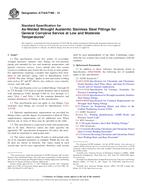 ASTM A774/A774M-13..
ASTM A774/A774M-13..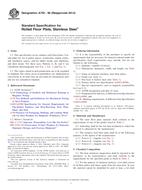 ASTM A793-96(2014)..
ASTM A793-96(2014)..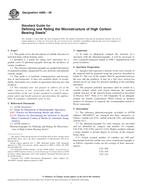 ASTM A892-09
ASTM A892-09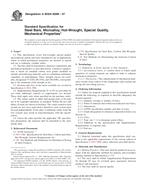 ASTM A920/A920M-07..
ASTM A920/A920M-07..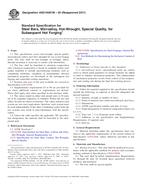 ASTM A921/A921M-93(2..
ASTM A921/A921M-93(2..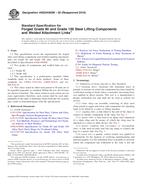 ASTM A952/A952M-02(2..
ASTM A952/A952M-02(2..
 Cookies
Cookies
